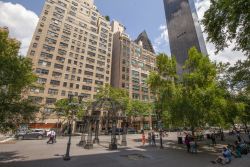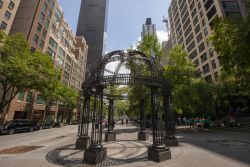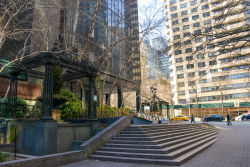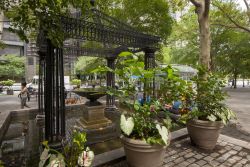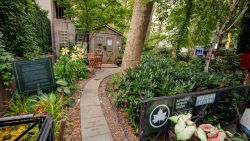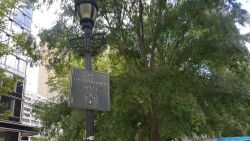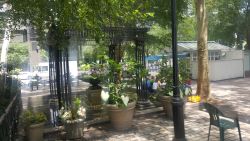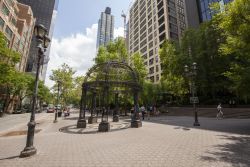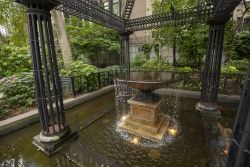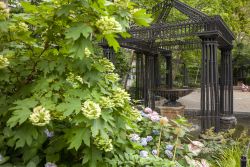Dag Hammarskjold Plaza
Dag Hammarskjöld Plaza
Dag Hjalmar Agne Carl Hammarskjöld was born on July 29, 1905 in Jönköping, Sweden. He was the youngest of four sons of a Swedish nobleman, a scholar and statesman, named Hjalmar Hammarskjöld, who served as Prime Minister of Sweden during World War I. Young Hammarskjöld spent his childhood in Uppsala and earned three degrees at Uppsala University by 1930: a Bachelor of Arts, a Filosofic Licenciat in economics, and a Bachelor of Laws. He then moved to Stockholm, where he worked as secretary of a governmental committee on unemployment and attended the University of Stockholm. Upon receiving his doctoral degree in 1933, he was made an assistant professor in political economy at the university.
Hammarskjöld held a series of governmental positions: Permanent Undersecretary of the Minister of Finance, Chairman of the National Bank’s Board, Foreign Minister, and Cabinet member in the Social Democratic government. He represented his country at the Paris Conference of 1947, the Paris Conference of the Organization for European Economic Cooperation in 1948, UNISCAN, and the sessions of the United Nations General Assembly from 1951 to 1953. Hammarskjöld never joined a political party, regarding himself as politically independent.
As a compromise candidate from neutral Sweden, Dag Hammarskjöld was unexpectedly asked to serve as Secretary-General of the United Nations in 1953 succeeding Trygve Lie, and reelected unanimously for a second term in 1957. As Secretary-General, he strove to prevent war and serve other aims of the United Nations charter. In the Middle East, this included diplomatic activity to support the Armistice Agreements between Israel and Arab nations; organization of the United Nations Emergency Force; clearance of the Suez Canal in 1957 and assistance in solving the Suez Canal dispute. The Secretary-General’s 1954 visit to Peking resulted in the release of fifteen Americans detained by the Chinese.
When President Joseph Kasavubu and Prime Minister Patrice Lumumba of the Republic of the Congo requested United Nations military assistance, Hammarskjöld urged the Security Council to act. The United Nations Force in the Congo was established, and the Secretary-General made four trips to the Congo to review operations. He died in a plane crash near Ndola, Northern Rhodesia while en route to the Congo on September 18, 1961. For his outstanding service to the United Nations and world peace, Dag Hammarskjöld was posthumously awarded the Nobel Peace Prize in 1961.
The park on East 47th Street between Second and First Avenues, just north of the United Nations, was acquired by the City of New York in 1948 and named Dag Hammarskjöld Plaza in 1961. For many years it has served as a popular gathering place for public demonstrations. The Friends of Dag Hammarskjöld Plaza was formed to raise funds, to organize special events, and to keep the park green and clean.
In 1997 the plaza underwent a reconstruction which created a symmetrical layout from north to south with six steel pavilions each housing a fountain. The same year marked the planting and dedication of the Katharine Hepburn Garden on the south side of the park. In 1998-99, the park area was expanded by a half-acre to the north to provide a visual link to the United Nations lawn and promenade. The plaza was updated with new trees, a steel lattice dome, additional park benches, and improved lighting.
Check out your park's Vital Signs
Clean & Safe
Green & Resilient
Empowered & Engaged Users
Share your feedback or learn more about how this park is part of a
Vital Park System

